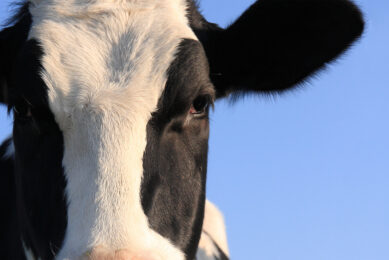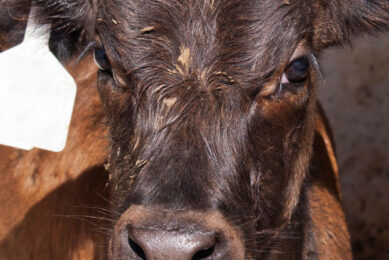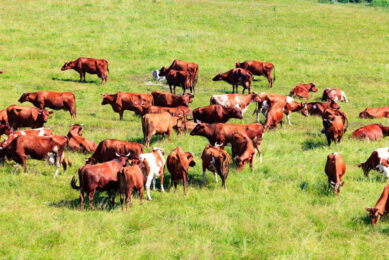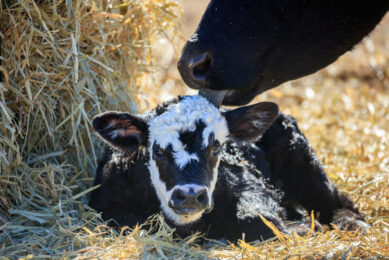Size matters: Halting the trend towards bigger dairy cows
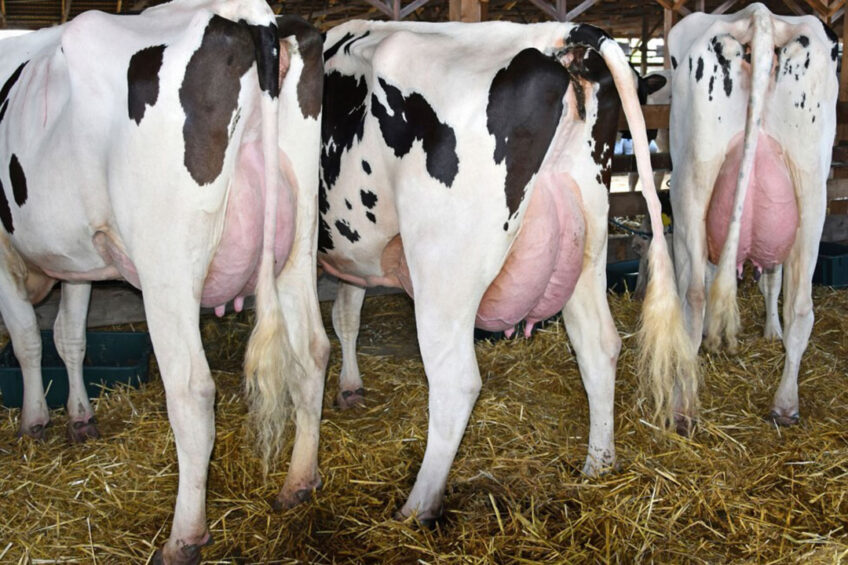
Dairy farmer Andy Rutter is firmly opposed to the principle of the “bigger the better” when it comes to running his 380-head Holstein herd.
Rutter, who spent 20 years working for genetics company, Genus, running its EU breeding programme before returning to the Cheshire Clayhanger Hall Farm in North-west England 4 years ago, says he is baffled that farmers continue to select for larger cows.
“Every time we have an accident, it seems to be with a big cow. She does the splits, gets stuck, has a displaced abomasum – especially if you have to pull out a big calf and are left with a big gap. It’s very noticeable in the taller, heavier cows.
“We were told that breeding against size would give us cows that are unable to compete in the herd. But we have actually found the complete opposite; smaller cows are definitely more confident on concrete and show bulling more strongly.”
Reducing cow size
Reducing cow size has involved paying close attention to the breeding indexes available, with the most obvious trait avoided being positive stature, and as such, the farm would rarely use a bull with more than zero for stature.
But with breed averages calculated each year for genetic evaluations, Rutter feels its easy to lose track of how big a bull’s daughters will be: “A rolling base is brilliant for providing accurate, up-to-date information, but it hides everything that’s happened before. If you add up all the base changes for stature it would be frightening. It means that a slightly negative stature bull today would have been positive last year and strongly positive 6 years ago.”
He uses indexes that identify bulls with the greatest genetic tendency to transmit good feed conversion efficiency on to their daughters and others that help breed cows with the best environmental credentials – rewarding those which are predicted to create the least greenhouse gas emissions in their lifetimes for each kilogramme of solids-corrected milk they produce.
“It’s that combination of feed efficiency and kilos of milk solids we like. We always want to select for positive fat and protein percentage bulls as, although we are not paid for components on our current milk contract, we need to make sure the cows have it in them if we need to push more for milk solids.”
All of this is reflected in the Rutters’ own herd whose average annual production (milk sold) is 10,600kg at 4.2% fat and 3.2% protein. This is combined with a pregnancy rate that is far above the national average at 33% and a calving interval of 372 days.
“Everywhere I go, farmers tell me they don’t want bigger cows, but all the genetic trends tell us that’s what they’re breeding…”
Cow size rising
Marco Winters, head of animal genetics for the Agriculture and Horticulture Development Board (AHDB), said the size of cows had been steadily rising since the mid-1980s, and there is no sign of the trend abating. Winters sees this as important as the average farmer in the UK is now feeding and managing a weight equivalent to 10 extra cows, for no other reason than the animals are bigger than they were around 30 years ago.
The trend has occurred alongside vast increases in milk production, but Winters believes that with the precision of modern breeding tools, there’s no reason why improvements in production cannot be made without increasing the height and weight of cows. However, if dairy producers fail to reverse this upward trajectory, the average UK Holstein will become even more expensive to run.
“Everywhere I go, farmers tell me they don’t want bigger cows, but all the genetic trends tell us that’s what they’re breeding,” said Winters, despite the negative weighting for bodyweight that’s built into national breeding indexes.
Graphs show a 30kg genetic difference in the average weight of a cow in 2021 compared with a cow in 1991, meaning that this extra body weight means the average 200-head, UK herd is feeding the equivalent of close to 10 extra cows every day.
Join 13,000+ subscribers
Subscribe to our newsletter to stay updated about all the need-to-know content in the dairy sector, two times a week.



